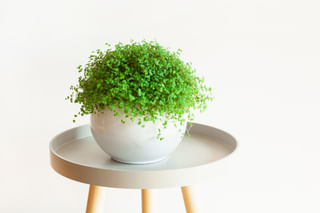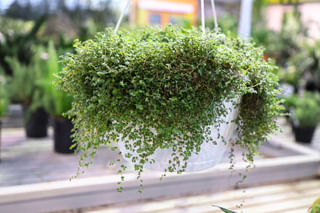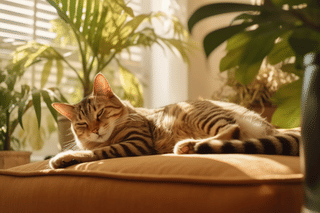How do you take care of the Baby's tears plant (Soleirolia soleirolii)?
Learn the best ways to care for the delicate Baby's tears plant (Soleirolia soleirolii) with this helpful guide. Discover how to keep this plant thriving in your home. Follow along as I guide you through the steps of taking care of this plant, making sure you have all the knowledge you need for success.
Are you a newbie plant parent who is looking for an adorable yet low-maintenance houseplant? If yes, let us introduce you to the fascinating world of Soleirolia soleirolii, more commonly known as the "Baby's Tears Plant." This evergreen perennial herb is native to the Mediterranean and has become a popular houseplant because it's quite easy to take care of and it stays quite small, so you can put it almost anywhere.
Even though it may seem challenging at first, taking care of a Soleirolia soleirolii can be made simple with the right guidance. In this blog post, I will provide you with a comprehensive and easy-to-follow guide on how to take care of your Soleirolia and help it thrive in your home.
These are the topics we're going to look at in this guide:
Let's get started and learn how to take care of this small and charming plant!
Light Requirements
If you're looking for a bright spot to keep your Baby Tears plant happy, look for an area with filtered indirect light. Direct sunlight can be too harsh and scorch their sensitive leaves, so placing it near a north-facing window gives it the right (weaker) sunlight exposure.
To ensure optimal health, make sure not to keep this small plant in areas that are too dark as this can result in leggy growth. On the other hand, if the leaves have turned to an unhealthy yellow or brown color, this is an indication that your plant is getting a bit too much light exposure.
Watering
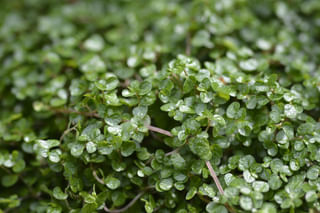
Baby's Tears Plants enjoy consistently moist soil, but they don't like to sit in water. Overwatering can lead to root rot and eventual death. Water your plant once or twice a week, depending on the humidity and temperature of your environment. Stick your finger an inch deep into the soil, and if it feels dry, it's time to water. Make sure to pour water until it comes out of the drainage holes and make sure to get rid of the excess moisture.
When you're watering this plant, make sure to get as little water on the leaves as possible. When the water drops stay on the leaves for a while, there is a chance for fungal diseases to develop.
Humidity
Just as watering is crucial for the well-being of the Baby's Tears plant, proper humidity levels play a significant role as well. Moisture in the air can be just as important as water in the soil. Let's dive into the specifics of the humidity requirements for your Soleirolia soleirolii.
Baby's Tears Plants love high humidity levels. These plants are native to the Mediterranean, where the air is humid, and they tend to dry out quickly in dry air environments.
The ideal humidity level for a Baby's Tears Plant is between 40% and 60%. This humidity level is very close to its natural Mediterranean environment and helps the plant thrive. If your home is naturally drier than this, especially during the winter months, consider using a few different methods to raise the humidity a little.
You can boost the humidity level around your plant by misting it daily or placing a tray of water near it. You can also create a mini-humid environment around your plant by setting it on a bed of pebbles in a dish filled with water. If you have a humidifier, this is also a great way to increase the humidity levels around your plant.
Fertilization
When you're taking great care of your Soleirolia soleirolii, it'll start to grow and will eventually need more nutrients to stay healthy. Let's have a look at how to keep your Soleirolia soleirolii healthy by feeding it properly.
Baby's Tears Plants don't need to be fertilized very often. Feeding them once every four to six weeks with a balanced liquid fertilizer during the growing season, spring and summer, is enough to keep them healthy long-term.
During the fall and winter, when the plant goes dormant, you shouldn't fertilize this plant at all as it may harm the plant's delicate roots.
Pruning and Repotting
To keep your Baby's Tears Plant looking healthy, you may need to prune it now and then. Pruning helps this plant stay the size you want it to be by removing dead leaves or stems that have grown too long.
Make sure to use sharp scissors for pruning as dull blades can damage the fragile stems.
To keep your Soleirolia soleirolii healthy and vibrant, it's important to replant it every few years. When the roots have become too big for the pot, it's time to transfer them into a new one with fresh soil. Make sure to use a pot with drainage holes so that excess water can drain out easily.
It's also important to pick a pot that's only slightly larger than its current pot. The soil in a pot that's much larger will hold onto too much moisture, which can cause root rot quite easily.
Pests and Diseases
Just like any other plant, Baby's Tears are susceptible to a few common pests and diseases that can have a big impact on its health. It's important to learn how to identify these threats and how to take preventive measures to ensure you keep the pests away.
Baby's Tears Plants are very sensitive to any kind of pests or diseases, so you need to be extra careful with them. Keep a lookout for any signs of pests such as aphids, mealybugs, spider mites, and scales.
If you suspect your plant has been infected by one of these pests, make sure to act swiftly by isolating the plant, washing the leaves with insecticidal soap, and following the directions to get rid of the infestation.
Common diseases to watch out for in Baby's Tears Plants are root rot from overwatering, leaf spot disease, and powdery mildew.
To prevent root rot, make sure not to overwater your plant, and always check that the top inch or so of soil is dry before watering again. For leaf spot disease and powdery mildew, increase air circulation around your plant and lower humidity levels. You can also treat infections with a fungicide and remove badly infected leaves.
Propagation
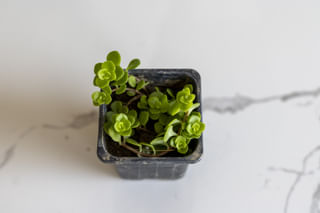
In this section, I'll guide you through the process of propagating your Soleirolia soleirolii. Here's how you can propagate your Baby's Tears plant:
- Use sharp, clean scissors or pruning shears and cut 3-4 inch stem pieces below a leaf node. Remove the bottom leaves, leaving a few of them at the top.
- Dip the cut end in rooting hormone (optional, but speeds rooting).
- Place the cuttings in a jar of water and place them in a warm spot out of direct sunlight. Roots should form in 1-2 weeks.
- Once the cuttings have developed roots that are 1/2 inch long or more, plant them in a well-draining potting mix. Keep the soil moderately moist as the new plants establish.
- The young plants can be kept indoors over winter and planted outdoors once nighttime temperatures stay above 45 F.
You'll now have successfully propagated your Baby's Tears plant. Keep in mind that not every propagation is successful. So if you're not successful right away, don't give up yet.
Toxicity to pets and small children
While it's essential to understand how to take care of the Baby's Tears Plant for it to thrive, it's also important to consider pets and small children.
Your Soleirolia soleirolii is a non-toxic plant, so you can rest assured that it's safe to keep around pets and small children and no harm will come to them if they accidentally eat the stems or leaves.
Thank you for reading this post! I hope it helps you to keep your plants healthy and beautiful! If you're looking for more guides on specific plants, you can always request a plant guide to get a guide for the plant you have trouble with.
Test your plant care knowledge
Quiz completed!
Want to learn more? Sign up for my newsletter to receive free tips in your inbox!
Sign up now!